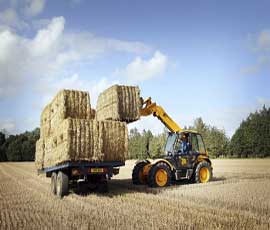Government inconsistency hits energy crops

Government inconsistency in the offering of support payments for energy crops had severely dented growers’ confidence, said Lucy Hopwood from bio-based consultancy NNFCC.
Speaking at the Energy Now Expo in Telford, she said this had led to a sharp drop in planting and could undermine the UK’s ability to meet the targeted 15% of energy produced from renewable sources by 2020. The potential area for energy crops was far greater than actual plantings, she said.
“Theoretically, crops such as short-term rotational coppice or miscanthus could account for 720,000ha – 2.8m hectares taking into the economic value of competing farm crops such as cereals,” said Ms Hopwood.
“However, in reality plantings of 7,000-50,000ha are probable taking into account all factors including social objections (from planting large blocks on mono-species).”
Changes in the level of funding for planting energy crops and the gap between the original scheme and its successor – elevated by a coincidental rise in cereal values on world markets – had dented producers’ willingness to commit, she explained.
Some of the shortfall could be made up by realising the true potential of baled straw, explained HGCA’s Harley Stoddart. It calculates 12.2m tonnes is available annually but 5.7m tonnes is incorporated into soil because growers either don’t wish to delay the sowing of following crops or overvalue straw’s contribution to soil nutrient and fibre content compared with its related sale value.
“Nutritionally straw is worth £18/t in N, P and K value compared with a market value of £40-45/t sold off the farm. But growers still incorporate it into soil as they don’t want the delay of having straw baled and the extra traffic on fields.
“That is acceptable – it’s the grower’s choice. Straw-burning power stations have been quick to capitalise on this and some baling operations that follow the combine (in eastern counties in particular) see ground cleared quickly. Yet these buyers are paying less than livestock farms for the straw.”
The contribution to soil fibre from incorporating straw was also a myth, he added. To make any real difference, incorporation rates of 20-30t/ha would be required although a little and often was arguably better than nothing at all.
“Growers need to understand the resource they have in straw. The marketplace will decide ultimately – the market is king – but we must overcome myths surrounding straw and allow growers to realise what an under utilised resource (for power generation) it is.”
For more information on energy crops visit our dedicated Farm Energy section
